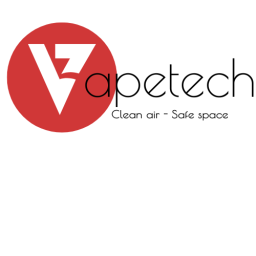
Safeguarding Schools: Exploring Vape Detection Technology and Strategies
Introduction:
In recent years, the pervasive issue of vaping among students has prompted schools to invest in advanced technology for detection and prevention. The rise in underage vaping has raised concerns about student health and the need for maintaining a secure and smoke-free educational environment. In this blog post, we will delve into the world of vape detection technology, highlighting its importance for schools and exploring the latest trends in implementing these key solutions.
The Need for Vape Detection in Schools:
As schools grapple with the challenge of curbing underage vaping, the demand for effective detection methods has never been more critical. The unique risks associated with vaping, coupled with the need to uphold a healthy learning environment, have led educational institutions to embrace innovative technologies designed to identify and deter vaping activities among students.
Technological Approaches Tailored for Schools:
1. Acoustic Detection Systems:
Specially designed for the school setting, acoustic sensors are crucial components of vape detection technology. These sensors can distinguish between normal ambient sounds and the distinct noises associated with vaping, offering discreet monitoring to ensure the safety of students.
2. Chemical Sensors with School-Focused Algorithms:
Chemical sensors calibrated with algorithms sensitive to school environments can detect specific compounds released during vaping. These sensors are optimized to identify substances such as nicotine and propylene glycol, providing a direct and accurate method for detecting vaping incidents.
3. Intelligent Video Monitoring for School Spaces:
Surveillance cameras equipped with intelligent video analytics are tailored for school spaces. These systems employ advanced image recognition algorithms to identify vaping behavior in real-time, allowing for swift responses to potential incidents.
4. Integration with School Security Systems:
Vape detection technology seamlessly integrates with existing school security systems. This allows for centralized monitoring and quick responses, ensuring a coordinated approach to maintaining a vape-free educational environment.
Current Trends and Implementations in School Settings:
1. Comprehensive Educational Programs:
Schools are adopting comprehensive educational programs to raise awareness among students about the dangers of vaping. These initiatives work in tandem with vape detection technology to discourage and prevent underage vaping within the school community.
2. Balancing Privacy and Security:
Recognizing the importance of student privacy, schools are actively seeking solutions that strike a balance between effective detection methods and respecting individual rights. Privacy-conscious implementations of vape detection technology are becoming increasingly prevalent.
3. Tailored Solutions for School Environments:
Vape detection systems are now more customizable, allowing schools to implement tailored solutions that meet the unique challenges of their environments. Whether in classrooms, hallways, or common areas, adaptable technology ensures a precise and effective response.
Conclusion:
As schools navigate the complex landscape of underage vaping, investing in advanced vape detection technology becomes paramount. Tailored solutions designed specifically for educational environments, coupled with comprehensive awareness programs, contribute to creating a safe and healthy space for students to thrive. Vape detection in schools is not just a technological advancement but a crucial step towards fostering a secure and supportive learning atmosphere.
We need your consent to load the translations
We use a third-party service to translate the website content that may collect data about your activity. Please review the details in the privacy policy and accept the service to view the translations.

